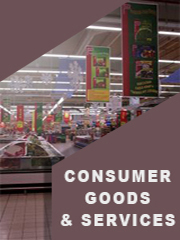Report overview
Cosmetics and Personal Care Products are Cosmetics (also known as makeup or make-up) are care substances used to enhance the appearance or odor of the human body. They are generally mixtures of chemical compounds, some being derived from natural sources (such as coconut oil) and many being synthetics.
In the range of halal cosmetics regulations for the use of cosmetics is not directly or indirectly affect the normal user to participate in religious rituals. They are free from animal cruelty, caring for the environment, not harming one?s body (eating natural formulations, organically grown products, and those free from pesticides or ingredients deemed harmful to the body) and fulfilling corporate social responsibility (which includes fair trade and no exploitation of workers).
Substances containing alcohol, such as contact with the skin is not strictly forbidden, but because alcohol can cause skin impure Muslims in the case of using alcohol can?t participate in religious services, but on other occasions unaffected.
Halal personal care products in the market today include hair shampoos, conditioners, bath and shower gels, cleansers, creams, lotions, talc and baby powders, toners, make up, perfumes, eau de colognes and oral care products.
This report aims to provide a comprehensive presentation of the global market for Halal Cosmetics, with both quantitative and qualitative analysis, to help readers develop business/growth strategies, assess the market competitive situation, analyze their position in the current marketplace, and make informed business decisions regarding Halal Cosmetics. This report contains market size and forecasts of Halal Cosmetics in global, including the following market information:
Global Halal Cosmetics Market Revenue, 2018-2023, 2024-2029, ($ millions)
Global Halal Cosmetics Market Sales, 2018-2023, 2024-2029, (M Pcs)
Global top five Halal Cosmetics companies in 2022 (%)
The global Halal Cosmetics market was valued at US$ 17710 million in 2022 and is projected to reach US$ 28060 million by 2029, at a CAGR of 6.8% during the forecast period. The influence of COVID-19 and the Russia-Ukraine War were considered while estimating market sizes.
Southeast Asia is the largest market with about 28% market share. Middle East is follower, accounting for about 10% market share.
The key players are Amara Cosmetics, INIKA Cosmetics, MMA BIO LAB SDN BHD, Golden Rose, Sahfee Halalcare, SAAF international, Sampure, Shiffa Dubai skin care, Ivy Beauty, Mirror and Makeup London, Clara International, Muslimah Manufacturing, PHB Ethical Beauty, Zuii Certified Organics, WIPRO UNZA, Sirehemas, OnePure etc. Top 3 companies occupied about 21% market share.
We surveyed the Halal Cosmetics manufacturers, suppliers, distributors and industry experts on this industry, involving the sales, revenue, demand, price change, product type, recent development and plan, industry trends, drivers, challenges, obstacles, and potential risks.
Total Market by Segment:
Global Halal Cosmetics Market, by Type, 2018-2023, 2024-2029 ($ Millions) & (M Pcs)
Global Halal Cosmetics Market Segment Percentages, by Type, 2022 (%)
Personal Care
Color Cosmetics
Perfumes
Others
Global Halal Cosmetics Market, by Application, 2018-2023, 2024-2029 ($ Millions) & (M Pcs)
Global Halal Cosmetics Market Segment Percentages, by Application, 2022 (%)
Hair Care
Skin Care
Make-up
Fragrance
Others
Global Halal Cosmetics Market, By Region and Country, 2018-2023, 2024-2029 ($ Millions) & (M Pcs)
Global Halal Cosmetics Market Segment Percentages, By Region and Country, 2022 (%)
North America
US
Canada
Mexico
Europe
Germany
France
U.K.
Italy
Russia
Nordic Countries
Benelux
Rest of Europe
Asia
China
Japan
South Korea
Southeast Asia
India
Rest of Asia
South America
Brazil
Argentina
Rest of South America
Middle East & Africa
Turkey
Israel
Saudi Arabia
UAE
Rest of Middle East & Africa
Competitor Analysis
The report also provides analysis of leading market participants including:
Key companies Halal Cosmetics revenues in global market, 2018-2023 (Estimated), ($ millions)
Key companies Halal Cosmetics revenues share in global market, 2022 (%)
Key companies Halal Cosmetics sales in global market, 2018-2023 (Estimated), (M Pcs)
Key companies Halal Cosmetics sales share in global market, 2022 (%)
Further, the report presents profiles of competitors in the market, key players include:
Amara Cosmetics
INIKA Cosmetics
MMA BIO LAB SDN BHD
Golden Rose
Sahfee Halalcare
SAAF international
Sampure
Shiffa Dubai skin care
Ivy Beauty
Mirror and Makeup London
Clara International
Muslimah Manufacturing
PHB Ethical Beauty
Zuii Certified Organics
WIPRO UNZA
Sirehemas
OnePure
Outline of Major Chapters:
Chapter 1: Introduces the definition of Halal Cosmetics, market overview.
Chapter 2: Global Halal Cosmetics market size in revenue and volume.
Chapter 3: Detailed analysis of Halal Cosmetics manufacturers competitive landscape, price, sales and revenue market share, latest development plan, merger, and acquisition information, etc.
Chapter 4: Provides the analysis of various market segments by type, covering the market size and development potential of each market segment, to help readers find the blue ocean market in different market segments.
Chapter 5: Provides the analysis of various market segments by application, covering the market size and development potential of each market segment, to help readers find the blue ocean market in different downstream markets.
Chapter 6: Sales of Halal Cosmetics in regional level and country level. It provides a quantitative analysis of the market size and development potential of each region and its main countries and introduces the market development, future development prospects, market space of each country in the world.
Chapter 7: Provides profiles of key players, introducing the basic situation of the main companies in the market in detail, including product sales, revenue, price, gross margin, product introduction, recent development, etc.
Chapter 8: Global Halal Cosmetics capacity by region & country.
Chapter 9: Introduces the market dynamics, latest developments of the market, the driving factors and restrictive factors of the market, the challenges and risks faced by manufacturers in the industry, and the analysis of relevant policies in the industry.
Chapter 10: Analysis of industrial chain, including the upstream and downstream of the industry.
Chapter 11: The main points and conclusions of the report.
